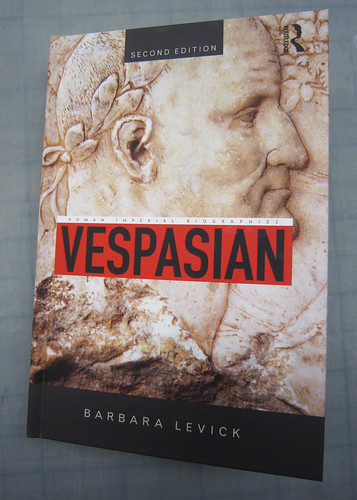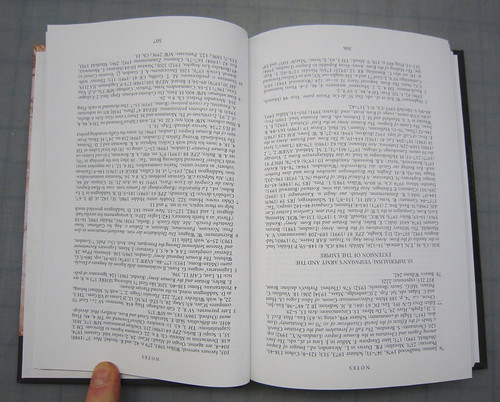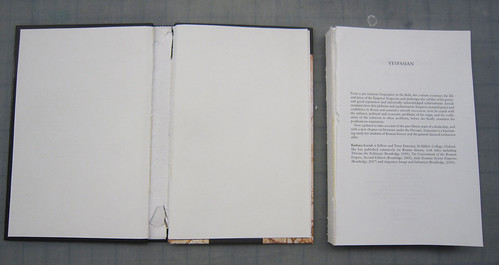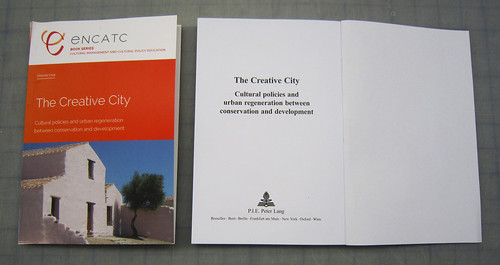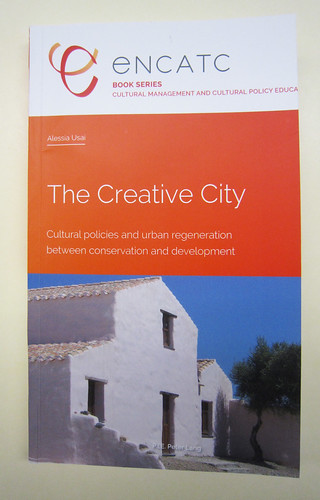This article is more than 5 years old.
If a small mistake is made at a commercial bindery, lots of books can be printed and bound incorrectly until the mistake is noticed. These small, damaged printing runs may look perfect until the cover is opened and many times, are not detected at the bindery. They are often not noticed until they arrive at a library. Ironically, this type of binding (used for most paperbacks) is called “perfect binding.” Each year, I repair a handful of badly bound books so our patrons can use them. For this post, I’ve selected two recent examples of badly bound books which are bound for a visit to Preservation, and then a rebound into circulation.
The book, Vespasian by Barbara Levick, looked perfectly normal but arrived bound upside down. When the cover was opened, it was immediately clear that you were seeing the text of the book in an upside down view.
To correct this situation, i removed the text block from the case, and was able to glue it back into the case. I also reinforced the hinges with Japanese Sekishu paper.
The book, The Creative City by Alessia Usai, had a unique set of problems. It was bound upside down like Vespasian but it was also glued into the case on the wrong side. In the next photograph, the cover has been removed from the text block of the book. You can see on the right, that the text block has been glued on the fore edge of the text, which is backwards.
The Creative City was bound upside down and backwards. For this particular situation, I trimmed off the glued edge and re-glued the pages on the correct side. Following this, I re-glued the text block back into the case. One slight issue with this approach was that because I trimmed off the glued edge of the text-block, it became smaller. Therefore, I had to also trim down the cover, and trim off a few words of the sponsoring organization.

